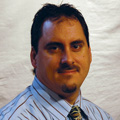
Keith Schloemer, LEED AP, is a plumbing and fire protection designer for Fort Thomas, Ky.-basedKLH Engineers. A member of the firm since 1994, Schloemer, who successfully completed the CIPE examination in 2002, has designed plumbing and fire protection systems for multiple commercial applications. A member of NFPA and ASPE, Schloemer talked topmerecently about a variety of subjects, including the evolution of fire protection engineering and green building practices.
